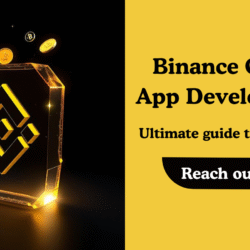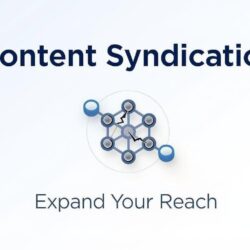B2B Market Segmentation operates at the intersection of data, psychology, and analytics. It combines scientific rigor with marketing intuition to categorize businesses intelligently. By applying scientific principles to segmentation, organizations can uncover hidden opportunities, optimize targeting, and fuel growth through precision-based strategies.
The Psychology of Business Buying
Understanding how businesses make purchasing decisions requires behavioral insight. B2B Market Segmentation leverages this psychology by identifying patterns of decision-making among companies. While individual buyers may be motivated by emotion, organizations are driven by logic, ROI, and strategic fit. Recognizing these motivators helps create content and offers that appeal directly to business logic.
The Role of Quantitative Analysis
Quantitative analysis lies at the heart of scientific segmentation. Marketers use statistical techniques such as clustering and regression to identify meaningful patterns in customer data. This approach transforms unstructured information into actionable insight. B2B Market Segmentation grounded in quantitative methods ensures accuracy, scalability, and measurable impact across campaigns.
How Data Analytics Enhances Segmentation
Data analytics empowers marketers to segment audiences based on firmographics, behavior, or intent with precision. Analytical tools allow the comparison of performance across segments, revealing which groups deliver the highest lifetime value. B2B Market Segmentation powered by analytics makes marketing investments more predictable, efficient, and performance-driven.
Combining Quantitative and Qualitative Research
A balanced segmentation strategy combines both numbers and narratives. While quantitative analysis identifies statistical clusters, qualitative insights explain why these segments exist. Interviews, surveys, and sales feedback help contextualize data findings. This holistic approach ensures that B2B Market Segmentation reflects both measurable and emotional aspects of B2B buying.
Identifying Growth Opportunities
Scientific segmentation allows marketers to identify under-served or emerging market segments. By analyzing engagement patterns and customer satisfaction scores, businesses can discover where demand is growing. B2B Market Segmentation thus becomes a proactive growth engine rather than a passive classification exercise.
Predictive Intelligence and Artificial Learning
Predictive intelligence enhances segmentation by forecasting customer behavior based on historical patterns. Machine learning algorithms continuously refine segments as new data emerges. This evolution keeps B2B Market Segmentation dynamic, ensuring that targeting adapts to changing business environments and emerging opportunities.
B2B Market Segmentation is the process of categorizing business customers according to shared characteristics. These can include company size, industry, revenue, geographic location, or even the technology they use. By identifying patterns and preferences within these categories, marketers can personalize communication and create highly relevant campaigns. This method not only reduces wasted resources but also helps in shaping a consistent brand experience across touchpoints.
The Importance of Segmentation in B2B Marketing
Effective segmentation is crucial because B2B buying decisions often involve multiple stakeholders and complex purchasing cycles. Unlike B2C, where emotional appeal dominates, B2B buyers rely heavily on logic and data. Market segmentation provides clarity by identifying what each buyer segment values most. It empowers sales and marketing teams to tailor their strategies, ensuring alignment between product offerings and customer expectations.
Key Types of B2B Market Segmentation
The four main types of segmentation include firmographic, geographic, behavioral, and technographic. Firmographic segmentation divides markets based on factors like industry type or company size. Geographic segmentation focuses on regional attributes, which are critical for global campaigns. Behavioral segmentation looks at customer interactions, such as buying habits or engagement level. Technographic segmentation examines the tools and technologies that companies use. Together, these dimensions form the foundation of any effective segmentation plan.
Steps to Building a Strong Segmentation Framework
Building a strong segmentation framework starts with gathering accurate data. Businesses should invest in CRM systems and data analytics tools to collect and manage relevant information. Once data is compiled, it should be analyzed to reveal distinct customer patterns. The next step involves creating segment profiles that outline each group’s needs and decision-making processes. These profiles should then guide campaign development, ensuring messaging and offers resonate with each audience type.
Leveraging Data for Deeper Insights
Data-driven insights allow marketers to refine segmentation continuously. By tracking engagement metrics, lead conversion rates, and feedback loops, teams can identify which segments deliver the highest returns. Predictive analytics tools further enhance this by anticipating customer behavior. Leveraging such data ensures that marketing remains relevant even as industries evolve, helping organizations maintain a competitive edge.
Challenges in B2B Market Segmentation
One of the main challenges in B2B segmentation is data quality. Inaccurate or incomplete data can lead to misaligned targeting. Additionally, segment boundaries can shift as businesses grow or pivot their strategies. To overcome this, organizations must adopt adaptive models that evolve alongside their customers. Regular audits and validation checks help maintain the accuracy and effectiveness of segmentation efforts.
The Role of Technology in Modern Segmentation
Technology has transformed how businesses approach segmentation. Tools like artificial intelligence, intent data platforms, and automation software streamline the process. AI can identify patterns that human analysts might overlook, while automation ensures timely engagement across channels. This technological integration results in more personalized campaigns that align with buyer intent and drive faster conversions.
Aligning Segmentation with Business Strategy
A successful segmentation strategy aligns seamlessly with broader business goals. Each identified segment should directly support sales targets, product positioning, and brand growth. When alignment is achieved, it enhances cross-functional collaboration between marketing, sales, and product teams. The result is a unified approach that maximizes efficiency and delivers measurable business outcomes.
The Impact on Marketing ROI
Segmentation science directly improves ROI by focusing marketing spend on high-potential prospects. It reduces wasteful outreach and enables hyper-targeted messaging. B2B Market Segmentation ensures that each marketing dollar delivers measurable value, supporting both pipeline velocity and customer retention.
Building Data-Centric Organizational Culture
Organizations that excel in segmentation cultivate a data-driven culture. Every department—from marketing to sales—uses segmentation insights to make informed decisions. B2B Market Segmentation becomes not just a marketing function but a strategic pillar embedded across business operations.
Future Trends in Scientific Segmentation
The next wave of segmentation innovation will involve deeper integration of AI, big data, and intent analytics. Businesses will use real-time intelligence to adapt messaging instantly based on customer signals. The future of B2B Market Segmentation is one of speed, intelligence, and continuous learning—a perfect blend of science and strategy.
About Us
Acceligize is a global B2B demand-generation and technology marketing firm specializing in performance-driven lead generation solutions. Their services include content syndication, account-based marketing, intent and install-based targeting, and custom campaign strategies. Leveraging data science, technology, and human intelligence, Acceligize helps clients reach high-quality audiences and drive conversions across the full marketing funnel.




